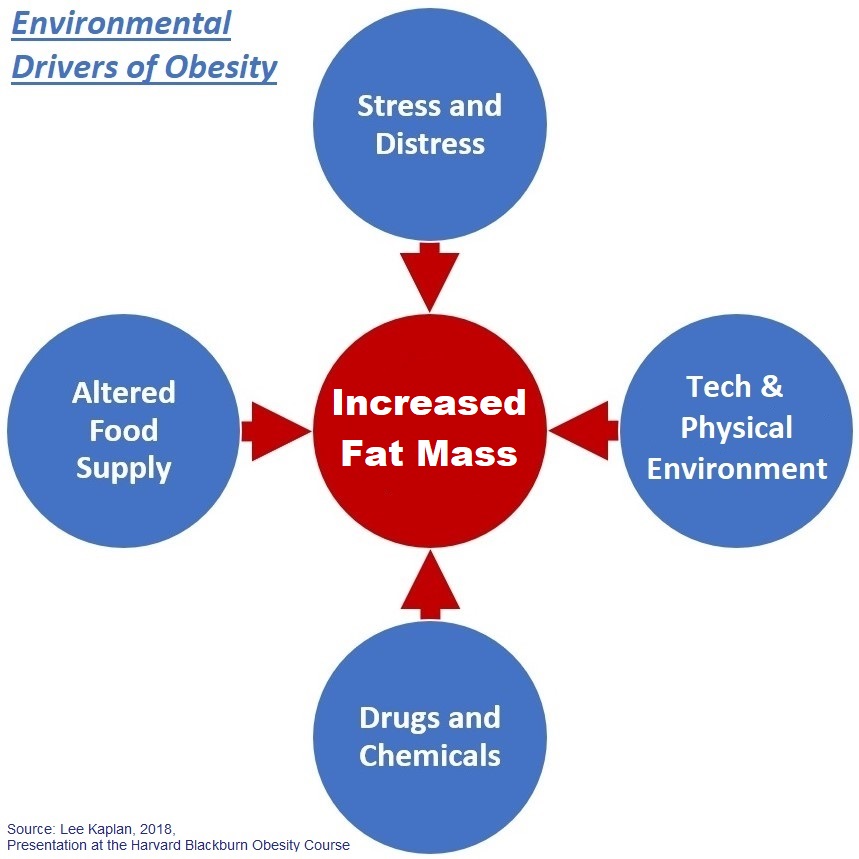
How Much Obesity Do Pesticides Cause?
 Why? This is the basic question that remains unanswered after four decades of rising obesity. Why do we see such a persistent rise in obesity prevalence – all over the world? Broadly, we can lump the suspects into four groups: food, stress, physical environment, and chemicals. Of course, the most common presumption is that it’s all about food. But it would be foolish to dismiss the importance of drug and chemical exposures that disrupt our endocrine system. In fact, recent reviews tell us pesticides appear to be raising our risk for obesity and metabolic syndrome.
Why? This is the basic question that remains unanswered after four decades of rising obesity. Why do we see such a persistent rise in obesity prevalence – all over the world? Broadly, we can lump the suspects into four groups: food, stress, physical environment, and chemicals. Of course, the most common presumption is that it’s all about food. But it would be foolish to dismiss the importance of drug and chemical exposures that disrupt our endocrine system. In fact, recent reviews tell us pesticides appear to be raising our risk for obesity and metabolic syndrome.
Pesticides as Obesogens
Earlier this month, Jerrold Heindel and colleagues published a comprehensive review of the causal links between chemical exposures and obesity. They proposed sorting chemicals that might cause obesity into three groups: Class 1 obesogens, Class 2 obesogens, and potential obesogens. For Class 1 obesogens, in vitro, animal, and human data all point to a causal role in weight gain.
Among pesticides, Heindel found the strongest data for DDT, though mostly banned, to still be playing a role in obesity prevalence:
Based on the number of positive prospective human studies, DDT is highly likely to be a human obesogen. Animal and human studies showed obesogenic transmission across generations. Thus, a POP banned almost 50 years ago is still playing a role in the current obesity pandemic, which indicates the need for caution with other chemical exposures that can cause multigenerational effects.
For other pesticides, they suggest classification as Class 2 obesogens. They have a link to obesity, but require further research to quantify and fully describe the risk.
Pesticides and Metabolic Syndrome
With a new paper published in Environmental Pollution, Hugo Lamat and colleagues are less equivocal:
“In conclusion, pesticides exposure is a major risk factor for metabolic syndrome.”
They base this on a systematic review and meta-analysis that finds a 30 percent increase in risk attributable to overall exposure to pesticides and other chemicals that are present in them.
Thinking Outside the Food Box
We have come to think about the food as the primary source of risk for obesity. But these studies – and others – remind us that we are living with a rising tide of exposure to endocrine disrupting chemicals that might be playing a role. The tired old eat-less/move-more paradigm for overcoming obesity won’t do much for the risks that these chemicals bring.
Click here for the Heindel paper and here for the Lamat paper. For further perspective, click here, here, and here.
The Farm in Grue, painting by Paul Gauguin / WikiArt
Subscribe by email to follow the accumulating evidence and observations that shape our view of health, obesity, and policy.
April 25, 2022

April 27, 2022 at 11:37 am, Richard Atkinson said:
Shouldn’t forget infectious agents. Adenovirus 36 is the most closely associated with obesity – definitely causing obesity in experimentally infected animals and associated with obesity in numerous papers in humans. About 30% of people with obesity across the world have been infected, and this may be an underestimate as the test is for Adv36 antibodies and they may diminish over time to levels below the “positive” cutoff. Adv36 was first identified in 1978, just before the “hockey stick” in human obesity across the world and there has been speculation that it may have mutated from an animal (bird) virus since the genetic makeup is fairly different from most other human adenoviruses.
April 27, 2022 at 12:00 pm, Ted said:
You’re right, Dick.